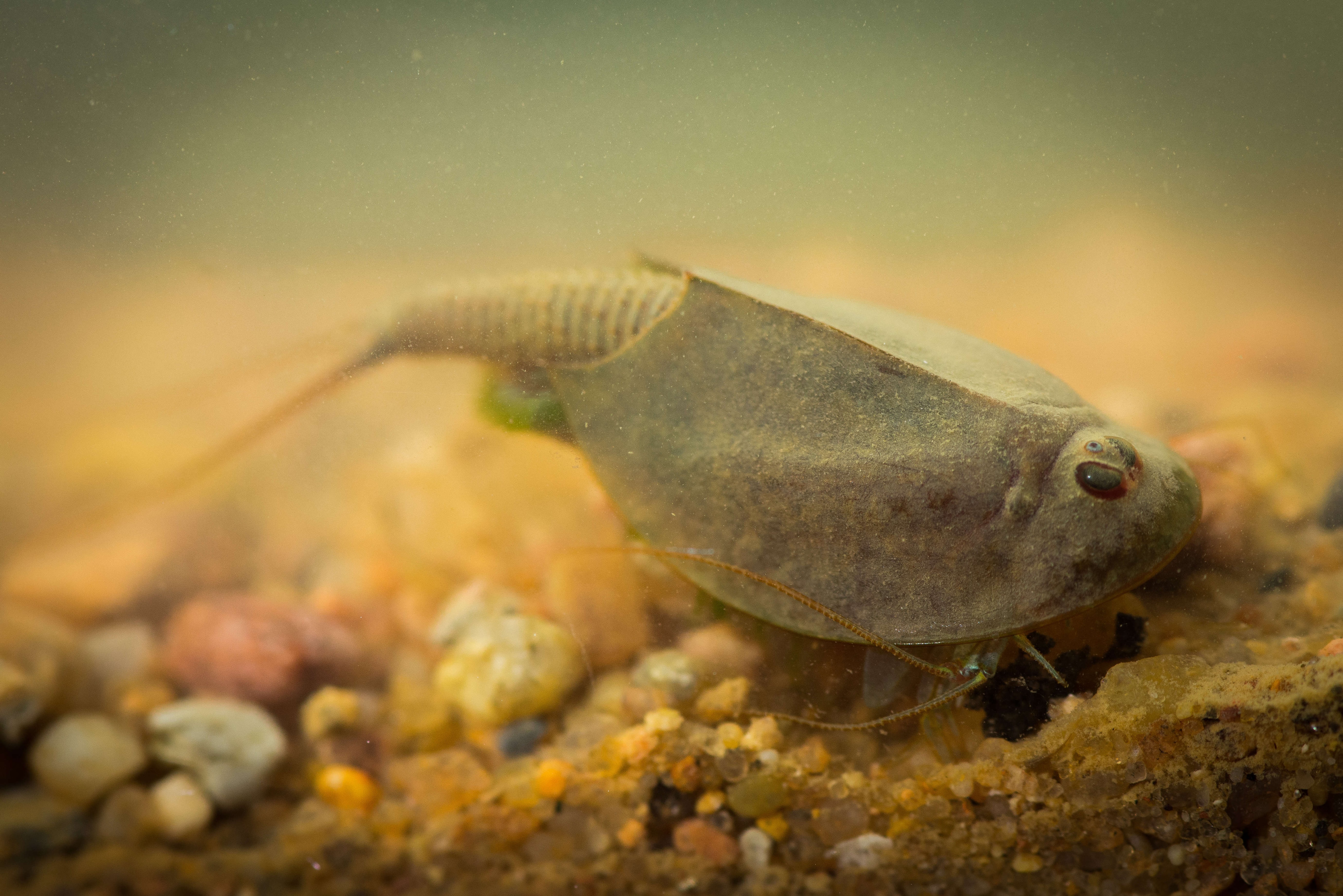Create a free profile to get unlimited access to exclusive videos, sweepstakes, and more!
Surprise! Three-eyed time-hopping crustaceans emerge from seemingly nowhere after Arizona rainfall

Rainfall in Arizona’s desert climate is rare enough to count as an unusual occurrence all on its own. Wupatki National Monument, in the northern part of the state, sees an average of eight inches per year, concentrated almost entirely in summer months. In July of this year, torrential rains dumped nearly five inches of rain over the course of a couple weeks.
“It’s not unusual to have summer storms that produce up to an inch of rain at a time,” Lauren Carter, Supervisory Park Ranger at Wupatki National Monument told SYFY WIRE. “But to have 4.63 inches in 10 days is not typical.”
It was enough water to fill the monument’s ceremonial ball court with a temporary lake. And that’s when things got truly weird. The ball court, originally built by the area’s indigenous peoples — ancestors of contemporary Pueblo people, closely related to Hopi — found itself filled with a wholly different sort of visitors: small, three-eyed crustaceans called triops.
“Visitors on the Wupatki Pueblo Trail came to the visitor’s center and told us. They thought they were tadpoles,” Carter said.
Triops which resemble small horseshoe crabs, measuring up to three inches in length, take their name from the three clearly apparent eyes perched atop their shells. The larger eyes are compound and do most of the heavy visual lifting. The third eye, known as a naupliar ocellus, is located centrally and just above the other two. It’s simpler in construction and assists in orientation. While these two eye types are different, they do work in concert to build a complete visual picture.
While their eyes may be their defining feature, it’s far from the weirdest thing about these small creatures. Triops are an aquatic species which has found a way to survive and thrive in some of the least aquatic environments. And they do it by hopping forward in time, sometimes with decades between generations. This strategy has rewarded them well. They’re still going strong roughly 300 million years after they first emerged.
Their success relies largely on their bizarre and variable reproductive process. They have a number of strategies for passing their genetic information on to the next generation. Triops are capable of reproducing sexually but it’s a fairly rare occurrence, mostly because it just isn’t necessary. Disparate populations may invoke different strategies including hermaphroditic fertilization and asexual reproduction via a process known as parthenogenesis, Moreover, these strategies tend to differentiate along geographic distributions, indicating adaptive changes over time.
Because triops often live in temporary waters, quick reproduction is the name of the game and must be accomplished through any available means. In the case of Wupatki National Monument triops, their temporary home dried up after only a few weeks, leaving the pocket population of crustaceans a ready meal for predators. That was plenty of time, however, as the normal lifespan of triops is only about four weeks.
“It’s likely [new eggs were laid] since there were many adult triops in the water for at least a week. We would need to take a soil sample and look at it with a magnifying glass or microscope to confirm though,” Carter said.
Triops eggs emerge from a modified pair of legs toward the back of a female’s body. Once triops reach sexual maturity they’re capable of pumping out a lot of eggs. An average female might produce 200 eggs over their relatively short lifespan.
Each egg is like a nuclear fallout shelter for the undeveloped animal inside. Their thick shells are capable of withstanding extreme conditions including freezing temperatures and a complete lack of moisture. They can even survive high temperatures up to just below boiling. These qualities have made them a popular pet, similar to Sea Monkeys, because the dried eggs can be packaged and hatch later, once reintroduced to water. Though simply introducing them to water isn’t quite enough.
Triops have evolved not to hatch at the first sign of water. Doing so would risk hatching during a light rain, insufficient to create a suitable environment in which to mature and reproduce. Instead, they wait it out. Once enough water is present over a long enough period, they emerge and start the process all over again.
This tactic allows triops to survive the lean times, jumping from year to year or decade to decade, until conditions are ideal. It’s at least part of the reason they’ve survived so long. When times get rough, when the climate changes or an extinction level change occurs, triops lie in waiting, napping through the turmoil, waiting for the right time to re-emerge.
It’s uncertain which species will survive in the post-human apocalyptic wastelands, but surely triops will be there.



























